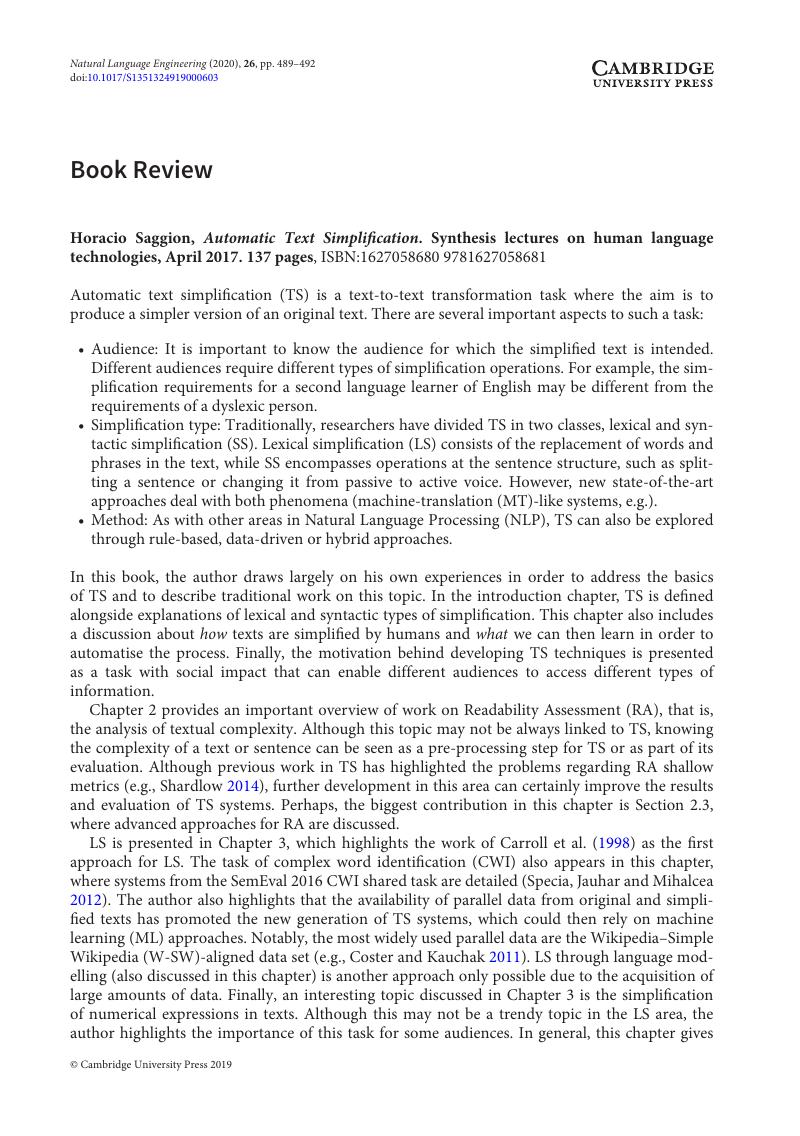Alva-Manchego, F.,
Joachim, B.,
Gustavo, P.,
Carolina, S. and
Lucia, S. (
2017). Learning how to simplify from explicit labeling of complex-simplified text pairs. In
Proceedings of the Eighth International Joint Conference on Natural Language Processing (Volume 1: Long Papers). Taipei, Taiwan: Asian Federation of Natural Language Processing, pp.
295–
305 Asian Federation of Natural Language Processing.
Google Scholar 